|
Video: From ape man to neanderthaler (BBC)
LEARN TO RECOGNIZE & UNDERSTAND THE MOST IMPORTANT LINES IN THE PALM OF YOUR HANDS! A significant difference between the human hand and the primate hand is that the human is designed for a single purpose: the act of grasping & manipulating (prehension), and our feet do the walking (bipedalism). Contrary the primate hand is designed for a dual role: to act both as a hand... and a foot! In this perspective named physiologist John Napier the primate hand as the 'foot-hand' (J. Napier, 1993 - p.75). What do we know about the 'foot-hands' of chimps, bonobos, gorillas, orangutans, and other primates? Of all primates only bonobos are capable to walk confidently on two feet - they do that about 25% of the time during ground locomotion. Chimpanzees are only able to walk confidently on two feet when they are in the water. But all other primate species are usually inclined to use their 'foot-hand' during walking. True, human babies like to crawl around frequently during early years of life. But obviously, there is a big difference between the human 'flat hand' crawl and the primate's 'fist-walk' (bonobos & orangutans) and 'knuckle-walk' (chimanzees & gorillas). All great apes have oppable thumbs, but none of the primate thumbs is capable of doing precision grips like humans can. And in none of the primates is the thumb as long as the human thumb - see the various photos below. The gorilla hand is featured with a relatively long thumb + has the shortest fingers and is thereby closest to the human hand in it's manual proportions. But chimpanzees and bonobos are more capable of making the typical human 'precision grip'. So quality of prehension is not only related to thumb length; motoric funtion & versatility are also heavily involved in that. And of course, the structure & other fingers as well! Actually, the superior characteristics of the human hand have been associated with the relative long, opposable thumb. Neurologist Frank Wilson devoted in his book 'The Hand' a full chapter to the human thumb, titled: The human hand: cast + skeleton.  
The hand of a bonobo: real hand + skeleton.  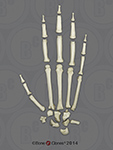
The hand of a chimpanzee: cast + skeleton.  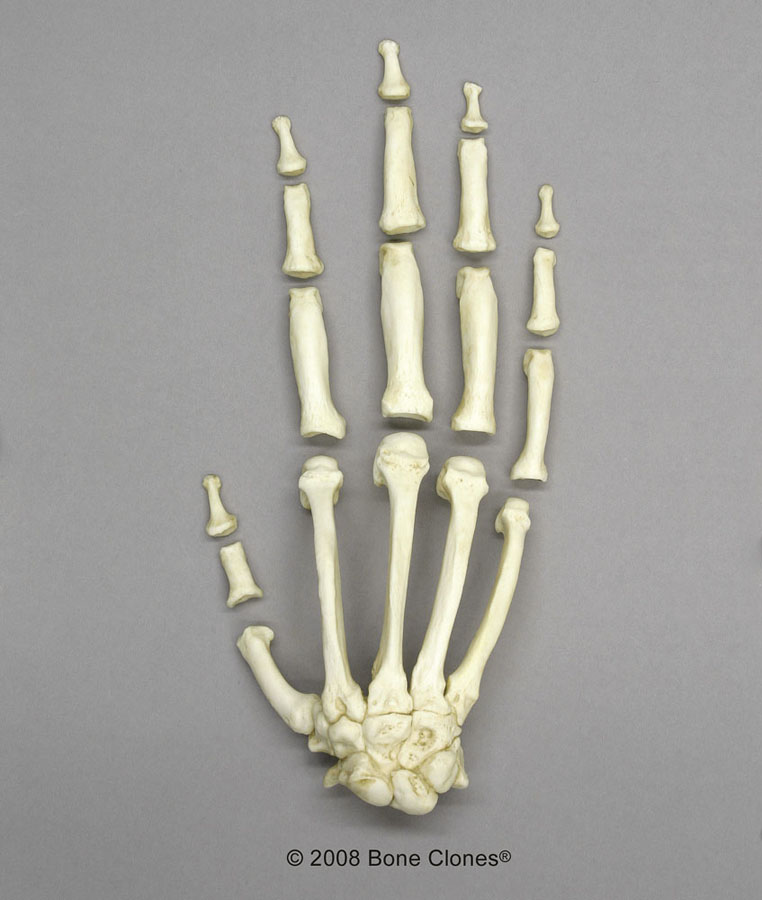
The hand of a gorilla: cast + skeleton.  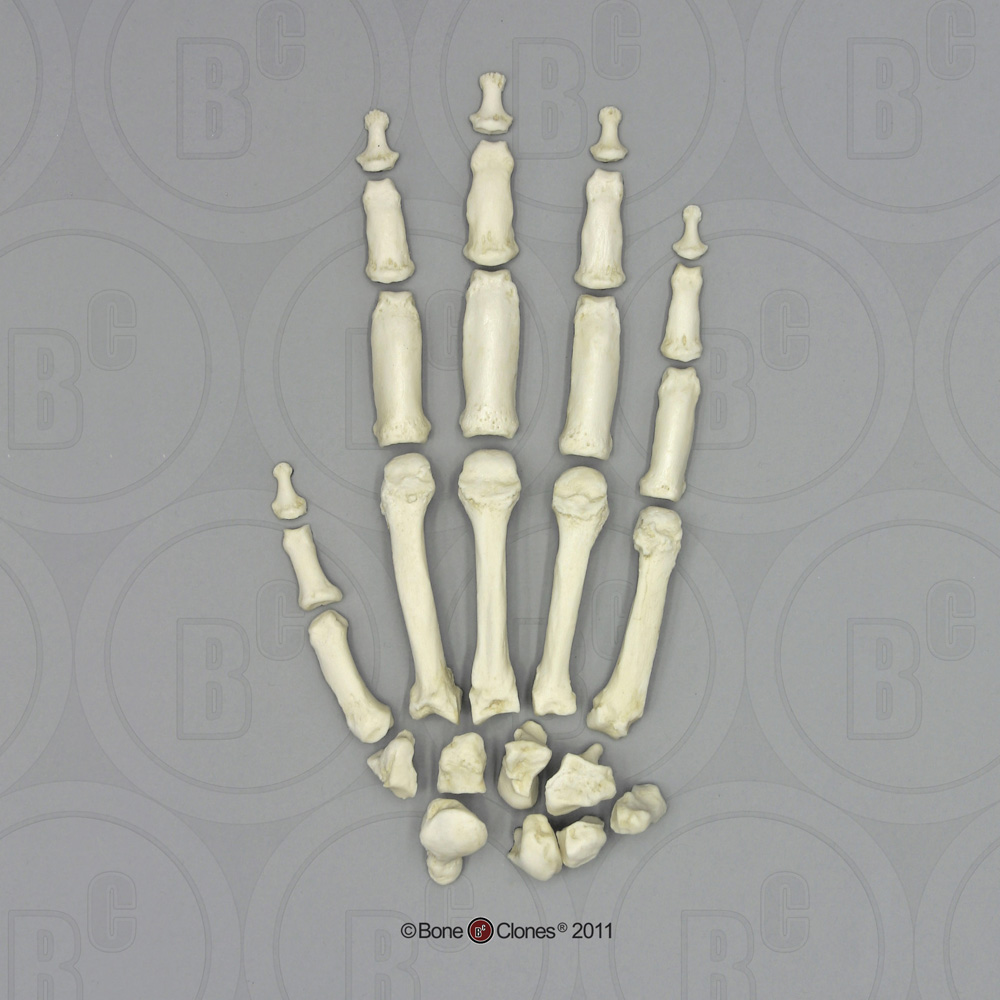
The hand of an orangutan: cast + skeleton.  
When looking at the hand lines or primates one can easily notice that the primate hand is usually characterised by the presence of 3 to 5 horizontal creases that 'transverse' the full palm. Another characteristic is that quite frequently multiple of these 'transverse creases' are connected with each other: see the pictures above and below. The typical curvation of the 'primary palmar lines' in the human hand, is never seen in the hands of primates. These observations partly explain why in humans the 'single palmar transverse crease' has been nicknamed as the 'simian crease' - the 'simian' is a synonym for an ape or monkey. But while the 'simian crease' is rare in humans, far most primates actually have multiple likewise creases that fully cross (transverse) theirs palms. The photos below present an impression from the hand lines in a human hand and a few more impressions from the hands of the great apes. Hand lines, an impression from a human hand. 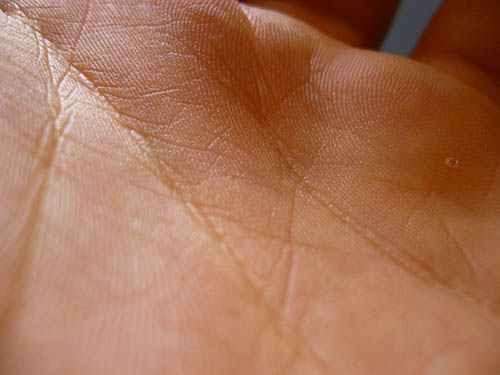
The hand lines of a bonobo (San Diego Zoo). 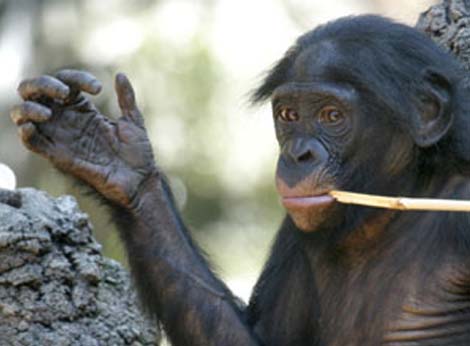
The hand lines of two chimpanzees: Petit (left) & Memosa (right) + chimp hand photo. 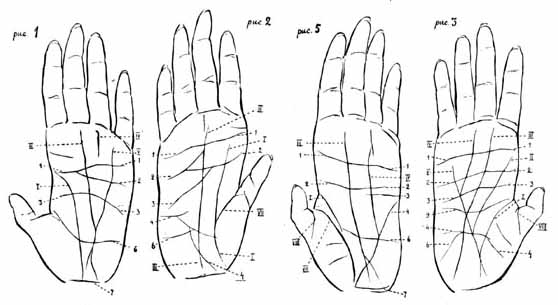 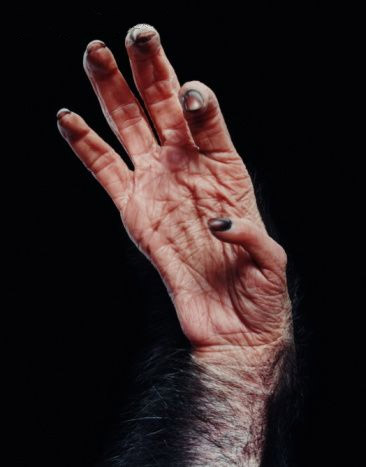
The hand lines of a gorilla: hand & hand cast. 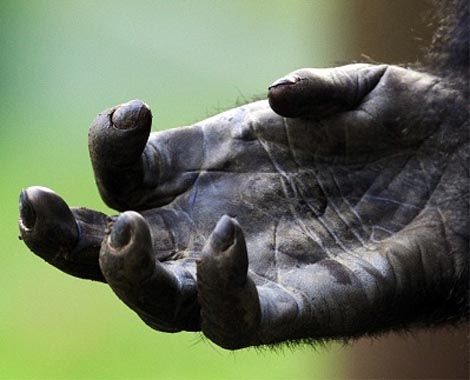
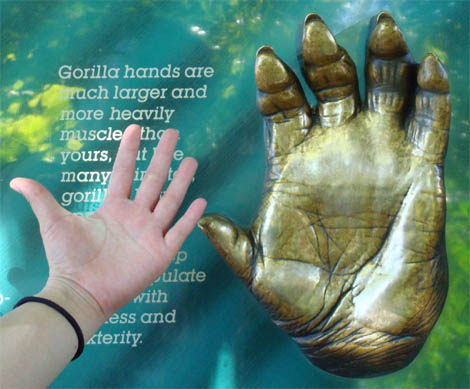
The hand lines of an orangutan: hand + handprint. 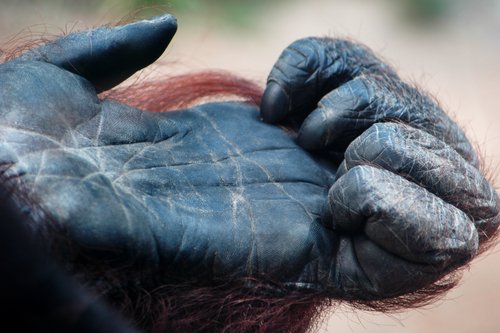
Versatility is the hallmark of the primate hand. With minor variations between species, 35 joints accomodate the palm and fingers. Six layers of muscles produces movements resulting in effective gripping patterns and maintaining feeding and resting positions, securing an infant's hold on its mother, removing parasites from the fur, catching insects, plucking fruits, extracting foods from plants & trees, and positioning objects for tactile, olfactory, and visual scrutiny. The hands of a primate species (homo = human, pan = chimpanzee, pongo = orangutan). 
Multiple structural constraints on mobility stabilize joints in regions in the hand that are habitually exposed to stresses during these positional and manipulatory activities. The locations and configurations vary considerably among primate species, as do the relative proportions of hand segments - all reflecting the diversity of their locomotor and feeding pattern! In order to understand more about the nature of the major hand lines in the human hand you can now read more about how they likely evolved during the last 4 million years! ...more.
|
